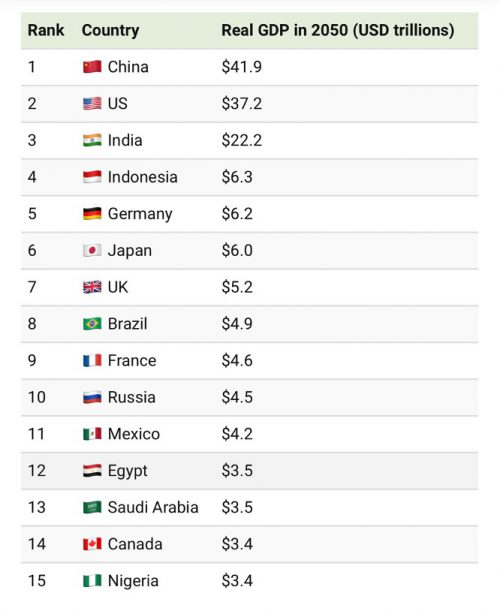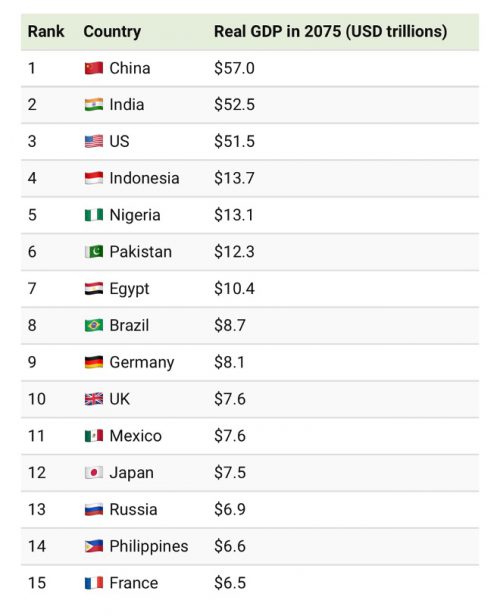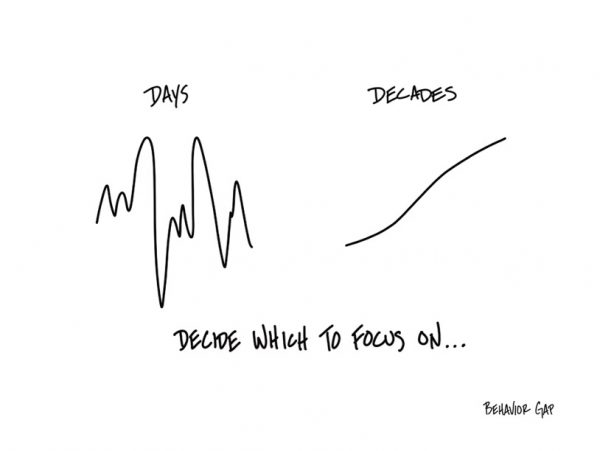In the Years 2050 and 2075
Goldman Sachs recently came out with a report “The Path to 2075”, which had long-term growth projections for the global economy covering 104 countries out to the year 2075. While the broad key observations are not surprising (as we are already seeing them play out), there are indeed some interesting (and shocking) observations, some of which you will see in the visuals below. But first, let me share a visual by Visual Capitalist that provides a historical and predictive overview of the world’s top 15 economies at several milestones: 1980, 2000, 2022 and Goldman Sachs projections for 2050 and 2075.

Can you see India’s ranking in the years 1980 and 2000?
We were fairly consistent at number 13.
It took us 60 years (2007) to reach the $1 trillion GDP mark. But we became a $2 trillion and $3 trillion economy in just 7 (2014) and 5 years (2019) respectively.
By 2022, India jumped eight spots to become the world’s fifth largest economy, surpassing UK and France. Likewise, China jumped from the seventh largest economy to the world’s second largest one. While you are witnessing this, the balance of global economic power is projected to shift dramatically over the next 5 decades.

Source: Visual Capitalist
By 2050, Goldman Sachs believes that the weight of global GDP will shift even more towards Asia with India now becoming the world’s third largest economy. But I guess, you already knew this. The surprising one however is the 4th largest one. Indonesia, which was not even in the Top 15 in 2022, is likely to become the fourth largest economy by 2050 surpassing Brazil and Russia to become the largest emerging market. An interesting development is when India and Indonesia signed a pact for cross border payments. Can you connect the dots?
Let’s now look at the table that includes the world economy numbers and ranking by 2075.

Source: Visual Capitalist
By 2075, India is poised to be the world’s second largest economy surpassing even the United States of America. But there seems to be a different world order by the time we reach 2075. Nigeria, Pakistan, Egypt which are nowhere in the radar today are likely to break into the top 10. One major consideration for these estimates is the rapid population growth, which should result in a massive labour force across all three countries. Now at this point of time, you are likely to rubbish all of this and start wondering – How is Pakistan and Egypt possible? And you might digress.
The point here is not whether these countries make it; the point is that given the trajectory that India is in today, we are more than likely to first become the world’s 3rd largest economy and then it’s second largest one (even though the years might change from 2050 to 2055 or 2045).
Now what does this mean for our stock markets?
Before I share my thoughts, some points from the Goldman report…
“We expect Emerging Markets (EM) equities to outperform Developed Markets in the longer run, due to stronger earnings growth and, as risk premia fall, multiple expansion. An important dynamic here is the deepening of the capital markets.
Our projections imply that EM’s share of global equity market capitalization will rise from around 27% currently to 35% in 2030, 47% in 2050, and 55% in 2075.”
In plain English the above lines can be translated as follows.
Indian Stock Markets (along with other Emerging Markets) will perform well.
Our share of the global equity market size will only go up significantly over time.
To translate in numbers……The Sensex will hit 100,000 first, and then 200,000, 500,000 and 1,00,0000 over the next several decades.
Even a 10% return means that the Sensex will double every 7 years…Let’s assume that the Sensex corrects by 10% and goes to 60000… This means by 2030, the Sensex is likely to be at 120,000.
240,000 by 2037
480,000 by 2044
960,000 by 2051
These are indicative numbers based on a 10% return.
This means that there will be a lot of wealth creation over the next several decades even at 10%.
Whether you will make it is up to you. It totally depends on where your focus will be.

What I’m about to tell you is going to sound crazy but, bear with me. Because it’s true.
Ready? Here it is…
We get to decide what we focus on.
Hold on… let me repeat that in case you missed it.
We. Get. To. Decide. What. We. Focus. On.
When it comes to investing, that means you have a choice. You can focus on days or decades. You can focus on months, quarters, years or decades.
If you choose to focus on days, months, and quarters you are signing up to make yourself miserable. And for no good reason. There’s actually no benefit to this perspective. I can handle pain that leads to gain, but this is just pain that leads to more pain.
On the other hand, when it comes to investing, we actually get rewarded for ignoring the daily noise. We get rewarded by focusing on decades. We get rewarded if we don’t interrupt compounding. As Warren Buffet said, “Benign neglect, bordering on sloth, remains the hallmark of our investment process.”
Remember, you actually have a choice.
Days or Decades.
What’s it going to be?
2030, 2040, 2050 or 2075…
For me, it’s 2050 and 2075…
What is it for you?






 and then tap on
and then tap on 

0 Comments